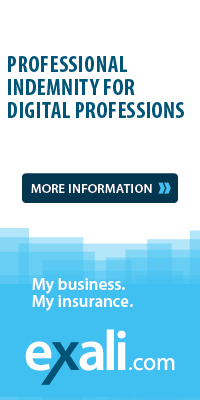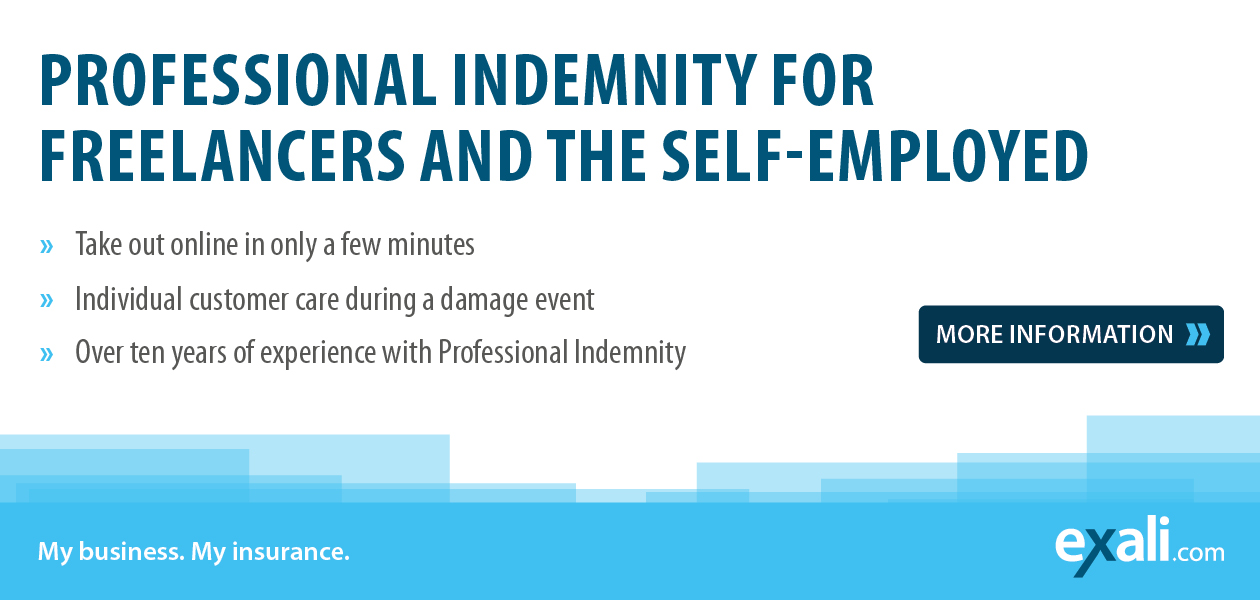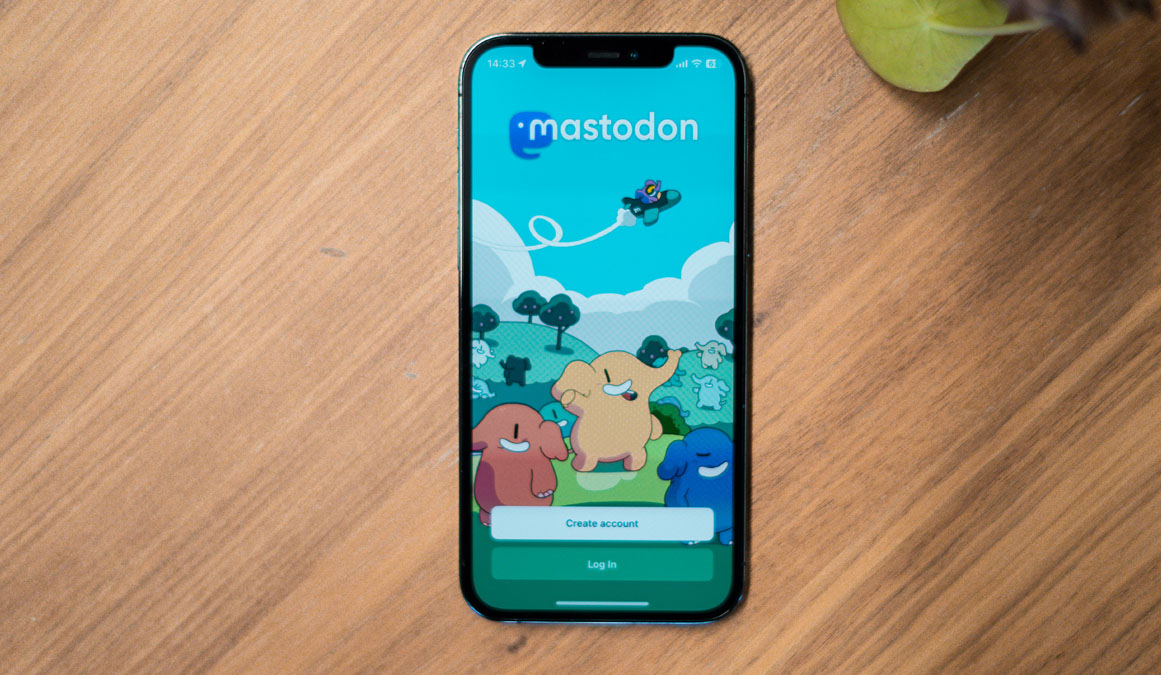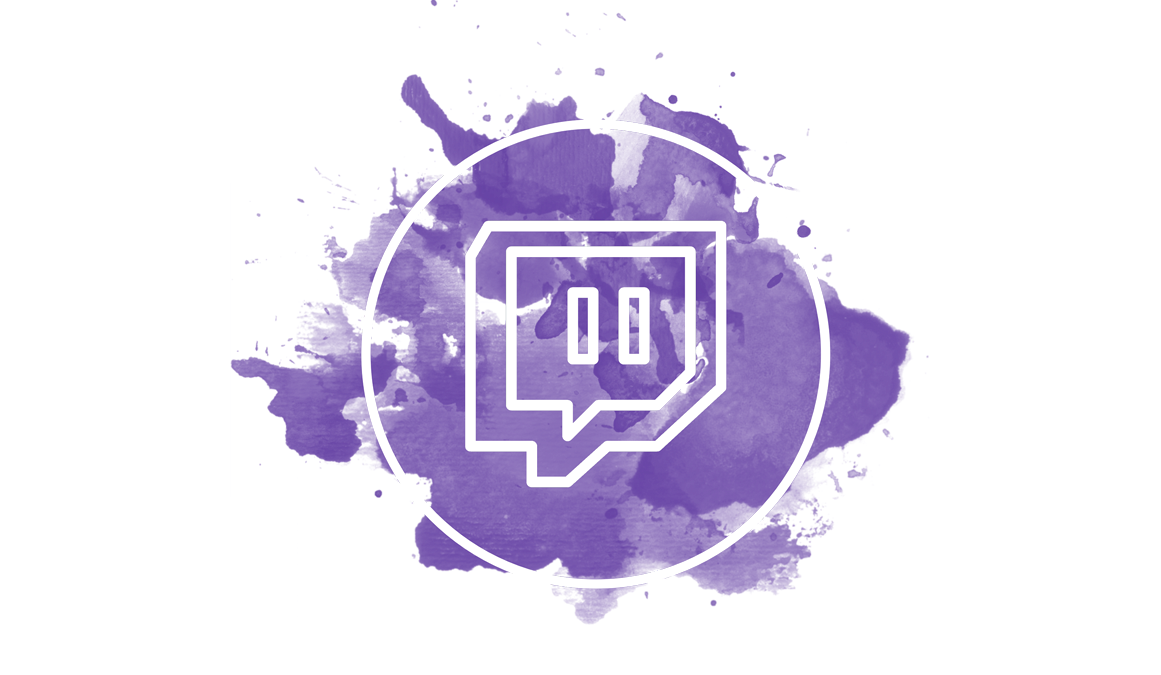LinkedIn: The Right Way for Freelancers to Use the Business Network
LinkedIn is no longer primarily used by employees to find jobs, but also offers freelancers and the self-employed an increasing number of opportunities to be found by clients. In this article, we show you how to use the business platform to increase the reach of your business without the pitfalls, and what opportunities the LinkedIn marketplace offers freelancers.
Overview:
LinkedIn Means Business Social Media
LinkedIn SEO: How your Profile Gets Found
Well Protected on LinkedIn - with Professional Indemnity Insurance through exali
Networking with LinkedIn: Get more Work and Reach for Your Business
Personal Branding with LinkedIn
LinkedIn Means Business Social Media
Facebook for business - that's how LinkedIn is perceived by many. Depending on how well connected you are on the platform, more or less posts like "Here's a picture of me at event XY" or "Here's a picture of me drinking coffee because breaks are important" and similar trivial content end up in your newsfeed. In fact, many have misunderstood the "regular content = high reach" rule. Because: Content that does not have "content value" - that is, knowledge and advice on business-related topics - is systematically penalised by the LinkedIn algorithm.
How LinkedIn's Algorithm Works
In the summer of 2023, LinkedIn made some changes to its algorithm to crack down on exactly those trivial posts, such as pictures of events or personal posts with no business relevance. From now on, the platform will prioritise substantive posts from "first-degree contacts".
Specifically, this means that LinkedIn will prioritise the following types of content
1.Content that shares knowledge and advice. This means that the algorithm now
evaluates posts based on whether they contain useful and relevant knowledge and/or
valuable advice. These posts are then displayed to users for whom this information is
likely to be highly relevant. Users who also share personal experiences, opinions, etc.
in their posts are also favoured by the algorithm over posts with generic information.
2.Expert content is also becoming increasingly important in comments on posts.
So LinkedIn also looks at the content of comments on posts, giving higher ratings to
those that provide more information on the original topic or encourage discussion.
3.Your own posts will be seen by more people in your own network (1st degree
people). Users who are not in your network will see fewer posts. The reason: People
prefer valuable content from someone they know. This applies not only to posts you
write, but also to comments.
4.Platform content - meaning posts about business-related topics - is becoming
increasingly important. Selfie posts or Facebook-style posts are less likely to be
considered by the algorithm.
The algorithm changes will not only affect the content - posts or comments - you publish, but also your profile. This is why it is important to include relevant keywords.
LinkedIn SEO: How your Profile Gets Found
Searching on LinkedIn basically works like this: You enter a keyword, for example "web design", and then receive suggestions of relevant content. The keyword can be entered as a simple word (web design) or as a hashtag (#webdesign). Unlike platforms such as Instagram, TikTok or YouTube, entering a hashtag will not only return posts, but also jobs or companies using that hashtag. In addition, when you search for a hashtag, LinkedIn prioritises posts from your own network.
Work with Keywords!
Like other social networks, LinkedIn uses keywords. These are relevant not only when writing posts, but also in your profile. For example, if you use the keyword "web design" in your profile, you have three times the chance of being found. This is because LinkedIn search results include the following options that are particularly relevant to you as a freelancer or self-employed professional:
- People - this shows you people who have the keyword you entered in their job title (for example, "freelance web designer").
- People who are talking about #keyword - as the name suggests, these are users who are using the keyword you entered as a hashtag in their own posts. LinkedIn will prioritise users from your network here, as well as profiles with particularly high reach.
- Posts - Posts that use the search term (both as a hashtag and as a word) are shown here. LinkedIn again focuses on posts from your own network, but you can also select the "Last 24 Hours" option to see all posts published on the platform in the last 24 hours. Preference is given to posts that meet the algorithm's specifications (valuable content).
As you can see, using keywords ensures that your profile, your posts and your business will be found. Therefore, make sure that you research the most relevant keywords for your profession, activity and industry and include them in your profile - the most important ones are Tagline, Description, Skills and Abilities. Use the two most important keywords for your job title (e.g. "freelance web designer" or "web design and UX/UI design" etc.).
This will ensure that you are found when potential clients search for these keywords. Keep the following in mind: Describe yourself and your portfolio as precisely as possible and do not only focus on general terms such as "self-employed", "freelancer" or "freelance". You can also learn the most relevant keywords for your industry from other LinkedIn users who are working in similar roles to yours.
Filling out your LinkedIn Profile correctly
In addition to using keywords, it is important to fill out your profile completely and to describe your past and current projects accurately. Particularly interesting for freelancers and the self-employed: You can add a tagline to your profile that describes you and your work. You can also list up to 20 areas of expertise. LinkedIn will show you exactly what you need to fill in to make your profile complete. The more information you provide, the higher your profile will be rated by LinkedIn and the better you will be found in searches.
Profile status - from newcomer to superstar
An important indicator of how well your profile is found is your profile status. There are three levels of profile status on LinkedIn:
- Newcomer: This is the default status for all members. Anyone who has filled out four sections of their profile will automatically receive Medium profile status.
- Medium: At this level, you will receive relevant job recommendations and targeted connections.
- Superstar: Get more relevant updates in your feed and more profile views. To achieve this status, you must complete seven sections.
Freelancers and self-employed professionals should fill out their profile to the point where they achieve Superstar status. This will increase the number of profile views you get from potential clients - both by getting you featured in other people's feeds and by getting more people to find you via keyword searches.
Caution: Confidentiality!
When describing projects, as with all references, you should always obtain your client's prior written consent. Why? Not all clients are enthusiastic about too detailed descriptions of your activities within a project. At exali, for example, we have already had a case where IT freelancers worked on encryption and communication technology projects for a defence technology company. A great reference for the company profile! Unfortunately, the descriptions of the freelancers were so detailed that even the competition could easily read what had been worked on in the projects.
When it comes to references, there are a few things to keep in mind - whether you want to use them on your own website, social media or for promotional material. We have summarised all the information you need to know about reference marketing in this article: Reference Marketing: This Is What You Need to Know
The company was less than enthusiastic, demanding that the freelancers remove the information immediately and reserving the right to claim further damages. You can read more about the case here: Too much Information in a Business Profile
Well Protected on LinkedIn - with Professional Indemnity Insurance through exali
Whether you are a freelancer or entrepreneur and use LinkedIn or other social media or career platforms: There is always the risk of making a mistake. For example, you may inadvertently breach confidentiality by describing a project in too much detail, or you may commit an infringement and receive a written warning. With Professional Indemnity Insurance, you can avoid these risks.
In the event of a written warning, the insurer will first check, at its own expense, whether the warning is justified and will pay any justified damages.
You can take out Professional Indemnity Insurance through exali conveniently online in just a few minutes. If you have any questions, you can reach our insurance experts personally by calling +49 (0) 821 80 99 46-0 (Monday to Friday 09:00 to 18:00(CET)) or by using our contact form.
Networking with LinkedIn: Get more Work and Reach for Your Business
Because networking is so important on LinkedIn, there is little point in filling out your profile once and then doing nothing. Even though LinkedIn is a business platform, the same applies as to other social networks: it's not called SOCIAL media for nothing. Done right, you can use LinkedIn to find work, network, promote yourself and your portfolio, and make sure clients are able to find you. It's not for nothing that LinkedIn is the number one network for generating leads.
The most important thing is to keep building your network on LinkedIn. This is because LinkedIn limits its search options for new contacts to the first three levels of your network. This means your direct contacts (first level), your contacts' contacts (second level) and their contacts (third level). It is only within this network that you can find new contacts and be found by potential clients. So if you want to get jobs through LinkedIn, you need to do one thing above all else: build, maintain and grow your own network. Every new contact you make will bring you new contacts. Contacts who have a large network of their own are therefore particularly "lucrative".
Expand and Build Your LinkedIn Network
In addition to past and present colleagues, clients, friends and acquaintances, there are two ways to quickly expand your network: recruiters and LinkedIn Groups. Recruiters have a lot of contacts on LinkedIn, and when you join groups, everyone in the group is automatically added to your contact list. You can join up to 100 groups on LinkedIn. So there is plenty of potential for new contacts.
LinkedIn Groups
The business platform allows you to join groups relevant to your business and create your own groups. There are a number of groups specifically for freelancers where jobs are shared. The groups are international and often there are groups for freelancers from a certain country or region (DACH, Scandinavia, Eastern Europe, etc.). However, rather than looking at the job groups, it makes more sense to look at those that deal with a topic relevant to your business, as the focus is on sharing. This may also help you make new contacts with other freelancers or potential clients.
Communicate Actively
The more active you are on LinkedIn, the higher you will rank in searches and the more likely you are to be seen by users who are not (yet) in your network. Therefore, it is not only important to network and look for new contacts, but also to interact with other users. There are two ways to do this:
- Regularly comment on posts made by people in your network.
- Search for posts on topics relevant to your business (using the keyword search) and then comment on posts from contacts outside your network.
A combination of the two makes the most sense. It's also important that you don't just like or share other people's content, but comment on it, preferably in a way that the algorithm considers your posts to be either "valuable content" or "stimulating discussion" and rewards them with more reach.
However, please be careful: Don't start commenting randomly on all posts that are even remotely related to your business. Instead, pick the posts that you can really contribute to - such as your own experiences or additional knowledge - and reply to them. You don't always have to agree with the original author, sometimes it's OK to disagree and start a discussion. When commenting, quality is more important than quantity. Instead of commenting on ten posts a day that all contain similar text, it is better to comment once a week on a post with valuable content.
Personal Branding with LinkedIn
Personal branding - making yourself or your business a brand - is extremely important, especially for freelancers and (solo) entrepreneurs. This involves much more than just having a website or a business profile with a CV, but also showcasing projects and, especially on a platform like LinkedIn, producing your own content. This can be done through content such as articles or documents, or by commenting on other people's content.
Basically, personal branding is based on the following building blocks
1.Who am I? This includes not only your name, but also your company and the
services or products you offer.
2.Unique selling point - what makes me special? What makes my business special -
what services do I offer that others do not? What makes my business different from
the competition?
3.Validation - why should people trust me? This is about showing what projects you
have worked on (portfolio, references), what skills you have, what relevant training or
certifications you have, and of course what past or present clients say about your
work (client feedback).
4.Credibility - what do I stand for? This includes the values that you and your
business stand for, but also a consistent image and reliable statements.
5.Relevance - what is my expertise? This is mainly about sharing your expertise - for
example through content on your own channels (blog, social media, etc.), specialist
articles on other websites or magazines, webinars or speaking at industry events.
You should also consider these five building blocks on your LinkedIn profile. You can do this by completing your profile, including appropriate keywords, and actively using the platform to grow your network.
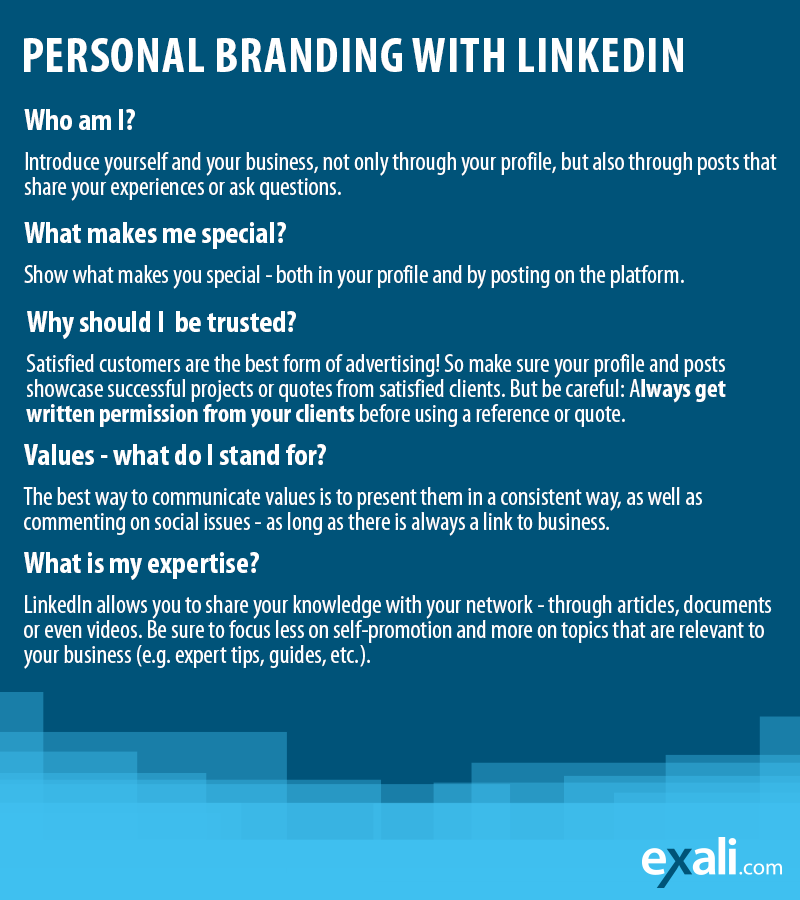
An active LinkedIn profile is a great way to show who you are and what makes your business unique.
Another option is to publish your own posts, which LinkedIn offers in the following formats
- Text
- image
- video
- Documents - here you have the option of displaying PDFs in a slideshow
- Articles
- Polls
- Events - where you can promote your own events such as webinars, lectures, workshops, etc.
- Jobs - where you can post job vacancies.
- Events - allows you to celebrate milestones such as starting your own business or completing a project.
- Newsletters
Creating Content for LinkedIn
Aside from your portfolio or key client testimonials, publishing your own content is the best way to showcase your expertise. This is also applicable to LinkedIn. You can showcase your business and what you have to offer in image or video posts, write your own articles or summaries of articles you have published on your own blog, and so on. When publishing articles, it is important to consider which component of your personal branding the content is most relevant to.
LinkedIn itself provides guidance on the types of posts that generate the most engagement:
Text-only Posts
In fact, posts that contain only text and hashtags, but no links or media content (images or videos) have the highest reach.
LinkedIn Newsletter
LinkedIn also makes it easy to create newsletters and share them with your network. The downside, of course, is that it's an internal LinkedIn newsletter. However, if you already have a newsletter for your business, you can easily mirror the content. You will then have two newsletter channels, but still have a wider reach for your content.
LinkedIn Polls or Question Posts
Ask and you shall receive - at least that's the theory. In reality, the response to a survey or even a question depends very much on your network. The same applies here: Posts with valuable content are rewarded by the LinkedIn algorithm. So it's best to save your "Nutella with or without butter" polls for your private Instagram accounts.
LinkedIn Videos
These are videos that you post directly on LinkedIn - not posts that link to other channels like YouTube, TikTok, Instagram, etc. In general, according to LinkedIn, video posts get three times as much engagement as text posts. The key is to post videos with valuable content that relates to your business and skills.
LinkedIn Documents
LinkedIn itself describes documents as the "most versatile type of content" you can publish on the platform. You can upload documents as PDFs and, for example, create a carousel post with different images or publish a presentation as a PDF. Users will always be able to download documents you publish as PDFs. Possible content for LinkedIn documents includes
- Carousel posts with tips or information on a specific topic (for example, 4 tips for customer acquisition).
- Presentations: You can also use the slides from a presentation for a document post.
- White papers: Do you have a white paper on a specific topic? You can easily share it with your LinkedIn network.
Personal Posts on LinkedIn
Not everything you post on LinkedIn has to be about your business - it is the personal posts that show the person behind the business that get the most engagement. But be careful: Personal posts do NOT mean pictures of your last lunch or your last holiday, but mainly posts about your experiences, ideas or values. These can be political posts as long as they are related to your company. For example, if you are passionate about sustainability and climate change, you can comment on political debates such as demonstrations or decisions.
Important: Your personal posts should add value to your network. For example, if you are a single parent and write about your own experiences with childcare and self-employment, you will not only show the person behind the business, but also encourage interaction with other users.
Is LinkedIn Premium Worth it?
You can implement the tips above with a free standard profile. LinkedIn also offers a number of premium features. For example, you can use your business account to find and connect with people or promote your business. With Sales, you can find leads and accounts in your target market, identify decision-makers and create lead lists. Basically, as a Premium Account, you will be more easily found by recruiters.
Services Marketplace for Freelancers
As of November 2021, LinkedIn also offers a marketplace for freelancers. As a service provider, you will be able to advertise your services. The marketplace works as follows: Contractors can search for a specific service (e.g. 'graphic design' or 'SaaS development') and are then shown profiles that offer the corresponding services. Currently, the platform has a strong focus on US providers, but there are always regional profiles displayed as well.
Freelancers who want to list their services on the platform need to register as a provider. To do this, you will have to make a few adjustments to your profile:
Create a LinkedIn Services Page
To create a Service Page, first go to the LinkedIn Marketplace. You can find it by opening the menu under For Business on the left side of your profile and then clicking on Services Marketplace.
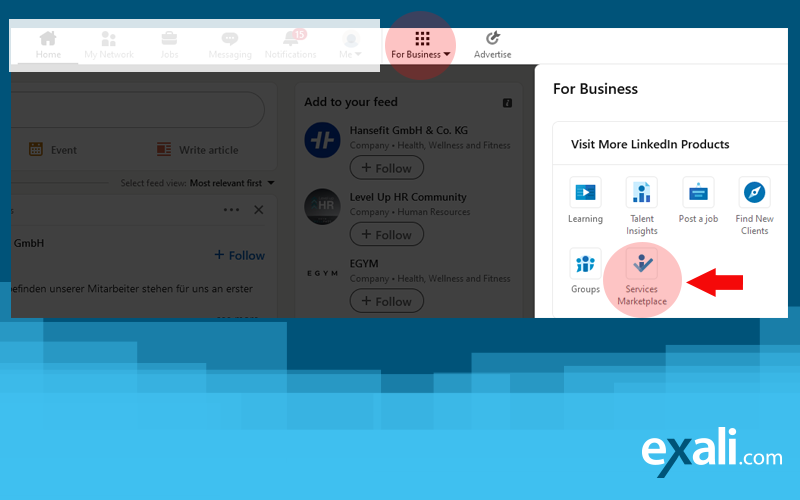
The Freelancer Marketplace on LinkedIn is officially called the "Platform for Services" - you can find it under LinkedIn Products on the left side of your profile.
On the platform, you will need to scroll down a bit until you find the section called Are you a provider? - and click on the Get Started button.

If you want your services to be found on the Services Marketplace, you will need to create a Services Page.
LinkedIn will now show you a brief summary of the steps you need to take to be displayed as a provider on the platform. The most important step is to create a service page. When you click the button Continue in the summary, you will automatically be taken to the service page menu.
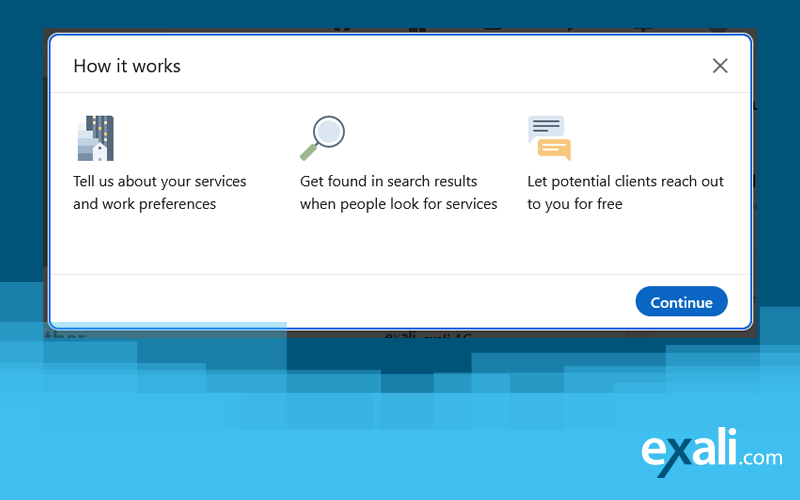
Creating a service page on LinkedIn makes it easier for people to find you on the marketplace and for potential clients to contact you.
You can include the following information on your service page
- Services provided – here you can add the services you offer
- About - this is where you can list your services, as well as your qualifications and completed projects. It is important to make it clear what differentiates you from the competition.
- Work location - you can specify where you are currently based (so you can be listed with local providers) or if you work remotely.
- Pricing - here you can either enter fixed prices or the option "Contact me to find out more about prices".
- Client Requests: Do you want people to be able to contact you directly? If so, tick the box "Allow LinkedIn members you are not connected to to contact you for free".
Once you have entered all the information, your Services page will be found through the marketplace. Potential clients can now find you by keyword search on the marketplace.
LinkedIn: Keep an Eye on the Risks
In addition to the opportunities that LinkedIn offers, there are also some risks that you should keep in mind as a freelancer. At exali, we have had some real damage events in connection with business platforms. Some of the following examples were committed on Xing - but could have happened 1:1 on LinkedIn.
Beware of Legal Infringements!
You can also commit a breach of the law on a business platform. For example, if you use other people's images, audio or video content without obtaining their permission or rights of use. The same applies to text content. But you can also infringe someone else's trademark rights, as happened to a self-employed consultant in a real damage event.
On her XING profile, the consultant advertised her business with a slogan. However, she was unaware that a company had already protected this slogan as a word trademark. As a result, the company sent her a written warning with a sum in dispute of 100,000 euros. Fortunately, she was insured through exali and the insurer paid the damages.
Unsolicited Enquiries
Unsolicited advertising on career platforms can also be expensive for freelancers. This happened to one of our clients, a freelance filmmaker. He wrote to a company on XING and told them that they did not yet have an image film on their website and that he would be happy to advise them free of charge and without obligation. However, instead of responding with a new assignment for the freelancer, the company sent him a written warning.
What is important here: While Xing's terms and conditions clearly state that such advertising measures are not permitted, LinkedIn's community policies only contain a note to this effect:
„Do not scam, defraud, deceive others. Do not use LinkedIn to facilitate romance scams, promote pyramid schemes, or otherwise defraud members. Do not share malicious software that puts our members, platform, or services at risk. Phishing attempts are not tolerated.“
However, LinkedIn's separate scams and fraud policies also explain exactly what is considered spam or fraud and what the consequences are.
Imprint on LinkedIn: Danger of Written Warnings
If you are a freelancer or self-employed professional on LinkedIn, you should always add an imprint to your profile. There have been a few cases on XING in Germany where business owners have received written warnings because they did not add an imprint on XING - this risk also applies to LinkedIn (and any other social media you use to promote your business).
Adding an Imprint on LinkedIn
LinkedIn does not have an imprint field. To avoid receiving written warnings, you should include your imprint in your profile description in the "About Me" section, and either include the link to your website's imprint there or include the imprint in its entirety. As a link placed there is not clickable and the courts have not yet decided whether this is sufficient, you can also place the link to the imprint in the "Website" section to be on the safe side.

Online Editor
Daniela has been working in the areas of (online) editing, social media and online marketing since 2008. At exali, she is particularly concerned with the following topics: Risks through digital platforms and social media, cyber dangers for freelancers and IT risk coverage.
In addition to her work as an online editor at exali, she works as a freelance editor and therefore knows the challenges of self-employment from her own experience.


